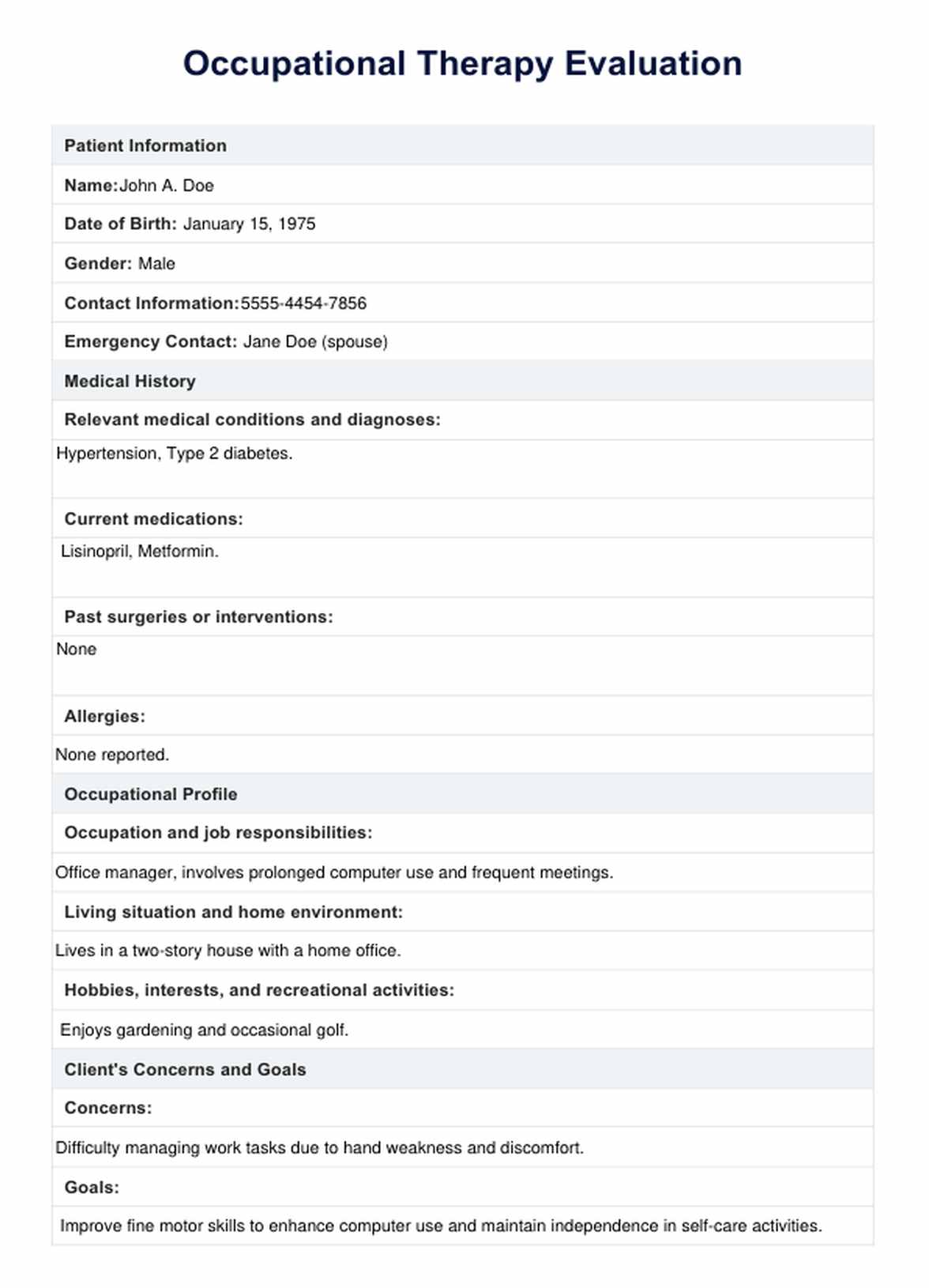
Discover Occupational Therapy Evaluation for holistic assessments. Enhance patient well-being with expert insights.

By Joshua Napilay on Jul 21, 2024.
Fact Checked by RJ Gumban.


Occupational therapy (OT) evaluation is a systematic process used to assess an individual's ability to perform daily activities and participate in meaningful occupations. The evaluation helps occupational therapists identify areas of strengths and challenges, set goals, and develop tailored interventions (American Occupational Therapy Association, 2020).
PDF Template Example PDF

OT Evaluation is a comprehensive process that forms the foundation for effective treatment planning and intervention. The following are the essential elements of an evaluation typically performed by an occupational therapist.
The evaluation typically begins with a thorough initial interview. This conversation allows the occupational therapist to gather crucial information about the client's medical history, current concerns, and personal goals. It's an opportunity to understand the client's perspective on their challenges and what they hope to achieve through therapy (American Occupational Therapy Association [AOTA], 2020).
Direct observation of the client performing various tasks is a critical evaluation component. This lets the therapist assess the client's abilities, challenges, and strategies in real time. Observations might include:
Occupational therapists use various standardized assessment tools to measure different aspects of a client's functioning objectively. These tools provide valuable data that can be used to track progress over time and compare results to normative data. Some commonly used occupational therapy assessment tools include:
This process evaluation involves assessing the client's environment, which is crucial, especially when considering home or workplace modifications. This may include occupational therapy home assessments to identify fall risks or barriers to independence, which is necessary for community-dwelling older adults. It can also involve workplace ergonomic evaluations and community mobility and access assessments.
Based on the evaluation findings and a systematic review, the therapist collaborates with the client to establish meaningful, achievable goals. These goals guide the development of a tailored treatment plan that addresses the client's specific needs and priorities.
For comprehensive management, developing a detailed health plan is crucial, stroke impact scale and care plan templates.
An Occupational Therapy Home Assessment is a crucial component of the evaluation process, particularly for individuals who may face challenges in their daily living environments. This comprehensive evaluation examines how a person interacts with their home space and identifies potential barriers to independence, home safety concerns, and opportunities for enhancing occupational performance (Stark et al., 2017).
The occupational therapist provides a detailed report outlining their findings and recommendations after the assessment. These may include:
This Occupational Therapy Evaluation template provides a structured framework for conducting comprehensive client assessments. Here's a step-by-step guide on how to effectively use this template in practice:
Collect essential patient information, including demographics, medical history, and current medications. This forms the foundation of the evaluation and helps contextualize the client's needs.
Engage in a dialogue with the client to identify their primary concerns and goals for therapy. This client-centered approach ensures that the evaluation and subsequent interventions align with the individual's priorities and desired outcomes. Document these concerns and goals clearly to guide the assessment process and treatment planning.
Utilize appropriate standardized assessments based on the client's presentation and concerns. Record the results of these assessments in the designated section. Complement standardized measures with careful observation of the client performing daily tasks.
Analyze and synthesize the collected information to clearly understand the client's occupational performance. Identify how the findings impact the client's daily life and ability to engage in meaningful activities.